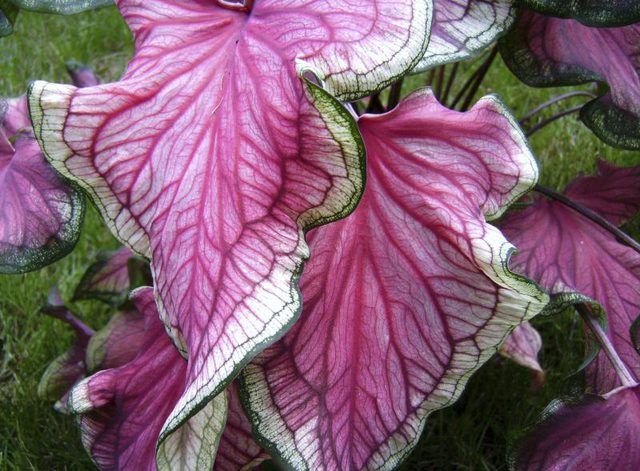Bulbs
Flower Basics
Flower Beds & Specialty Gardens
Flower Garden
Garden Furniture
Garden Gnomes
Garden Seeds
Garden Sheds
Garden Statues
Garden Tools & Supplies
Gardening Basics
Green & Organic
Groundcovers & Vines
Growing Annuals
Growing Basil
Growing Beans
Growing Berries
Growing Blueberries
Growing Cactus
Growing Corn
Growing Cotton
Growing Edibles
Growing Flowers
Growing Garlic
Growing Grapes
Growing Grass
Growing Herbs
Growing Jasmine
Growing Mint
Growing Mushrooms
Orchids
Growing Peanuts
Growing Perennials
Growing Plants
Growing Rosemary
Growing Roses
Growing Strawberries
Growing Sunflowers
Growing Thyme
Growing Tomatoes
Growing Tulips
Growing Vegetables
Herb Basics
Herb Garden
Indoor Growing
Landscaping Basics
Landscaping Patios
Landscaping Plants
Landscaping Shrubs
Landscaping Trees
Landscaping Walks & Pathways
Lawn Basics
Lawn Maintenance
Lawn Mowers
Lawn Ornaments
Lawn Planting
Lawn Tools
Outdoor Growing
Overall Landscape Planning
Pests, Weeds & Problems
Plant Basics
Rock Garden
Rose Garden
Shrubs
Soil
Specialty Gardens
Trees
Vegetable Garden
Yard Maintenance
How to Care for a Caladium
How to Care for a Caladium. You can add a tropical touch of the Amazon River to your own backyard by growing caladiums (Caladium x hortulanum), a colorful foliage alternative to flowering plants. Although caladiums are Brazilian natives, they’ll prosper in your backyard if you provide care that mimics their native environment.

You can add a tropical touch of the Amazon River to your own backyard by growing caladiums (Caladium x hortulanum), a colorful foliage alternative to flowering plants. Although caladiums are Brazilian natives, theyíll prosper in your backyard if you provide care that mimics their native environment.
Watering Needs
Because caladium leaves provide large surfaces for moisture to evaporate, the plants have a high water requirement. On the flip side, overwatering -- or waterlogged soil that drains slowly -- causes caladium tubers to rot. Water caladium plants to keep the soil moist but not soggy. Plants wilt quickly in dry soil, which may result in loss of leaves. Extended dry periods can cause the tubers to go dormant or may even cause irreversible damage. Donít plant caladiums under the eaves of your house to catch rainwater runoff, because the force of the falling water can shred the foliage.
Fertilization Regimen
Although caladium tubers have the ability to store the carbohydrates that nourish plants, the plants perform best with proper fertilization. When planting tubers, apply a balanced fertilizer, such as 8-8-8 or 10-10-10, at the rate of 2 pounds per 100 square feet. For smaller areas, use 2 teaspoons per square foot. Once a month, apply 1 pound of the same type fertilizer at the rate or 1 pound per 100 square feet, or 1 teaspoon per square foot. Keep the fertilizer off the leaves, and water it in thoroughly.
Pruning and Special Care
Typically, multiple leaves grow from a single tuber to form the caladium plant. Older leaves naturally wither and die, so removing them to keep a plant tidy is the only pruning that caladium needs. Caladium is a perennial in U.S. Department of Agriculture plant hardiness zones 8b through 11. If your garden is outside caladiumís perennial range, at the end of the growing season -- when all the leaves wither and die -- prune or gently pull all the leaves from the tubers before storing them during the winter. Even if you live within caladiumís perennial range, the tubers typically are healthier if you dig and store them so they do not rot in wet winter soils.
Dig the tubers, remove the dirt from around them and let them dry in a shady area protected from rainfall for approximately 10 days. Store the tubers in vermiculite or dry peat moss in a dry, warm place, such as a closet in a heated area of your home. A paper bag is better for storing tubers than a sealed plastic or glass container, which can cause moisture to build up and rot the tubers. Sterilize pruning tools by soaking them for five minutes in a mixture of 1 part household pine-oil cleaner to 3 parts water, and rinse thoroughly before cutting plants.
Pests and Other Problems
Caladiums are generally pest- and disease-free. A primary problem is tuber rot, which is usually avoided by planting in well-draining soil and keeping the tubers dry during winter storage. Shady gardens are homes to squirrels and chipmunks, which can be bothersome pests by digging up the tubers. Placing hardware cloth or chicken wire on the ground or over containers prevents bulbs from being uprooted. Nematodes are occasionally bothersome, but planting caladiums in different locations each year is the best management. Water caladiums during cooler times of the day to avoid burning the leaf margins.